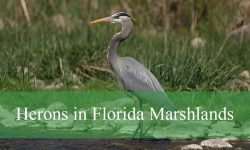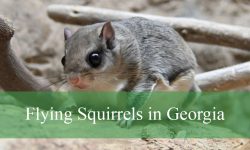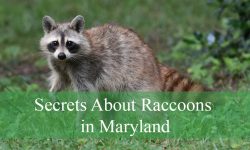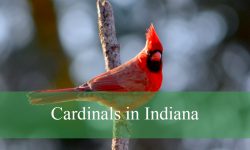Black bears might not be the first animals that come to mind when thinking about Florida’s wildlife, yet they are very much a part of the state’s natural landscape. As one of the largest native land mammals in Florida, the Florida black bear has a unique and evolving relationship with both the environment and the growing human population.
This article explores everything you need to know about black bears in Florida, from their history and habitats to their behaviors, interactions with humans, and current conservation efforts.
The History of Black Bears in Florida

Florida’s black bear population has a long history that stretches back thousands of years. Historically, black bears roamed throughout nearly every region of the state. Their natural range included the dense pine forests of the Panhandle, the cypress swamps of central Florida, and the oak hammocks of the southern regions. These bears played a vital role in the ecosystem, helping to control insect populations, disperse seeds, and recycle nutrients through their scavenging habits.
By the mid-20th century, the black bear population in Florida began to decline dramatically. Habitat loss due to logging, agriculture, and urban development pushed these animals out of many parts of their traditional range. Road construction fragmented important migration corridors, and unregulated hunting further reduced their numbers. By the 1970s, black bears in Florida were listed as a threatened species, prompting urgent calls for conservation action.
Where Black Bears Live in Florida Today
Today, black bears still inhabit large portions of Florida, although their range has become more fragmented. The largest and most stable populations are found in areas with vast tracts of protected forest, such as the Apalachicola National Forest, Ocala National Forest, Big Cypress National Preserve, and the Osceola National Forest. These regions provide the dense vegetation and limited human interference necessary for bears to thrive.
In recent decades, black bears have also begun reappearing in suburban and even urban areas. As their population rebounds and their habitat remains limited, they are increasingly seen near residential neighborhoods. This trend highlights both the adaptability of the species and the growing tension between wildlife and human development. Sightings have become more common in counties like Seminole, Lake, Marion, and Collier, where natural and human environments often overlap.
Physical Characteristics of the Florida Black Bear
The Florida black bear is a subspecies of the American black bear, known scientifically as Ursus americanus floridanus. It shares many characteristics with black bears found in other parts of North America but also exhibits several traits shaped by Florida’s unique climate and ecosystem. These bears typically have shiny black fur, a long snout, and small, rounded ears. Some individuals may display a lighter patch of fur on the chest, though this is relatively rare.
Adult males usually weigh between 250 and 450 pounds, while females are generally smaller, averaging 125 to 250 pounds. Despite their size, black bears are remarkably agile. They are excellent climbers and swimmers and can run at speeds up to 30 miles per hour. Their keen sense of smell allows them to detect food sources from miles away, an ability that often brings them into contact with human refuse or pet food.
What Florida Black Bears Eat
Florida black bears are omnivores, meaning their diet includes both plant and animal matter. Seasonal availability heavily influences what they eat. In spring and summer, bears feed on green vegetation, insects, and fruits such as saw palmetto berries and acorns. These food sources are high in nutrients and help them build the fat reserves they need for the cooler months.
During the fall, bears enter a state called hyperphagia, where they dramatically increase their food intake to prepare for winter. This phase drives them to consume large amounts of food in a short period. While Florida’s mild winters mean that most bears do not hibernate in the traditional sense, they still reduce their activity and rely on stored fat. When natural food is scarce, bears may turn to garbage, bird seed, or dog food left outdoors, increasing the chances of human-wildlife conflict.
Behavior and Life Cycle of Florida Black Bears
Florida black bears are generally solitary creatures, except during mating season or when a mother is raising her cubs. Mating typically occurs between June and August, with delayed implantation allowing the fertilized egg to begin developing later in the year. Cubs are born in January or February, usually inside a den made from brush, hollow trees, or dense vegetation.
A mother bear may give birth to one to four cubs, which stay with her for about 18 months before venturing off on their own. These young bears face many challenges, from finding territory to avoiding vehicle collisions and navigating areas dominated by human development. Male bears tend to disperse farther from their birth areas, while females often establish home ranges near their mothers.
Bears communicate using vocalizations, scent markings, and body language. They may stand on their hind legs to get a better view or emit a woofing sound to signal discomfort. Despite their size and strength, Florida black bears are typically shy and prefer to avoid confrontation.
Human-Bear Interactions in Florida
As Florida’s human population continues to grow, encounters between people and black bears are on the rise. These interactions can be both fascinating and concerning. In most cases, bears are simply searching for food and pose no direct threat to humans. However, when they become accustomed to human food or lose their natural fear of people, dangerous situations can arise.
Efforts to minimize conflict include public education campaigns, bear-proof trash containers, and ordinances that prohibit feeding wildlife. Residents in bear-prone areas are encouraged to secure garbage, remove bird feeders during active bear months, and avoid leaving pet food outside. These simple actions can go a long way in reducing bear attractants and keeping both people and bears safe.
Occasionally, problem bears that repeatedly seek out human food may be relocated or, in extreme cases, euthanized. Wildlife officials strive to strike a balance between conserving bear populations and maintaining public safety. Learning to coexist with bears requires a community-wide commitment to responsible behavior and habitat protection.
Conservation Status and Management Efforts
Florida black bears were removed from the state’s threatened species list in 2012, a decision that sparked both praise and criticism. While the population had grown significantly due to decades of protection and habitat conservation, some biologists and conservationists argued that development pressures and habitat fragmentation still posed serious risks.
The Florida Fish and Wildlife Conservation Commission (FWC) continues to monitor bear populations and implement management strategies. These include research initiatives, habitat preservation, and public outreach programs. The controversial 2015 bear hunt, held for the first time in over two decades, was intended to manage population growth but faced significant backlash and was halted after just two days.
Moving forward, wildlife officials have emphasized non-lethal methods and education as key components of bear conservation. Collaborative efforts with landowners, local governments, and conservation groups have helped protect critical bear corridors and reduce habitat loss. Programs that connect fragmented habitats, such as wildlife underpasses and conservation easements, are vital for ensuring long-term bear survival.
The Role of Florida’s Ecosystem in Bear Survival
Black bears serve as an important indicator species in Florida, meaning their health reflects the overall condition of the ecosystem. A thriving bear population suggests that large, connected habitats are intact and functioning properly. These forests not only support bears but also countless other native species, from panthers and bobcats to woodpeckers and gopher tortoises.
Preserving these wild spaces helps safeguard Florida’s biodiversity and maintain essential ecological processes like water filtration, carbon storage, and pollination. As apex foragers, bears help regulate populations of certain prey species and contribute to forest regeneration through seed dispersal. Their presence underscores the interconnectedness of Florida’s flora and fauna.
Protecting bear habitat also benefits people. Natural areas offer recreational opportunities, reduce flood risks, and improve air quality. In a rapidly developing state like Florida, maintaining wild landscapes requires strategic planning, political will, and strong public support. Understanding the value of black bears can inspire broader conservation action across the state.
Cultural Significance and Public Perception
Black bears have long held a place in the cultural heritage of Florida. Indigenous tribes respected them as powerful animals, often incorporating them into spiritual beliefs and storytelling. Today, black bears are featured in local art, community mascots, and wildlife photography. They serve as charismatic ambassadors for conservation and inspire curiosity and respect.
However, public perception of bears is not always positive. Fear, misinformation, and sensationalized media reports can shape attitudes and lead to calls for lethal control. Addressing these concerns through accurate information and respectful dialogue is essential. People are more likely to support conservation efforts when they understand bear behavior and see the benefits of coexistence.
Organizations throughout Florida continue to offer bear education programs, school workshops, and interpretive signage in parks and preserves. These initiatives aim to build appreciation for bears while encouraging practical safety measures. Engaging younger generations in wildlife conservation is especially important for the long-term protection of black bears and their habitat.
Looking to the Future of Black Bears in Florida
The future of black bears in Florida is a complex and evolving story. Climate change, habitat development, and human population growth will continue to shape their range and behavior. Still, with proactive conservation and increased public awareness, there is hope for peaceful coexistence between people and bears.
Technology is also playing a role in bear conservation. GPS collars, motion-sensitive cameras, and genetic sampling provide valuable insights into bear movements, population dynamics, and health. These tools allow scientists to better understand the challenges bears face and tailor conservation strategies accordingly.
Ultimately, whether black bears continue to roam freely across Florida will depend on the choices made by policymakers, landowners, and everyday citizens. Protecting wild spaces, reducing attractants, and fostering respect for wildlife are all essential steps in ensuring that black bears remain a vital part of Florida’s natural heritage.
FAQs About Black Bears in Florida
Are black bears common in Florida?
Yes, black bears are found in multiple regions of Florida, especially in large protected forest areas. Their population is estimated to be around 4,000 individuals statewide.
Do black bears in Florida hibernate?
Most Florida black bears do not hibernate due to the state’s mild winters. However, they may enter a period of reduced activity during the cooler months, particularly females with cubs.
What should I do if I see a black bear?
Stay calm, do not approach, and make yourself appear larger by waving your arms. Slowly back away and give the bear space. Never feed or try to interact with wild bears.
How can I keep black bears away from my home?
Secure your trash in bear-resistant containers, bring pet food indoors, and remove bird feeders during active bear seasons to avoid attracting bears.
Are black bears dangerous to humans in Florida?
Black bears are typically shy and avoid humans, but they can become aggressive if they feel threatened or if they’re used to human food sources. Proper precautions reduce risks.






